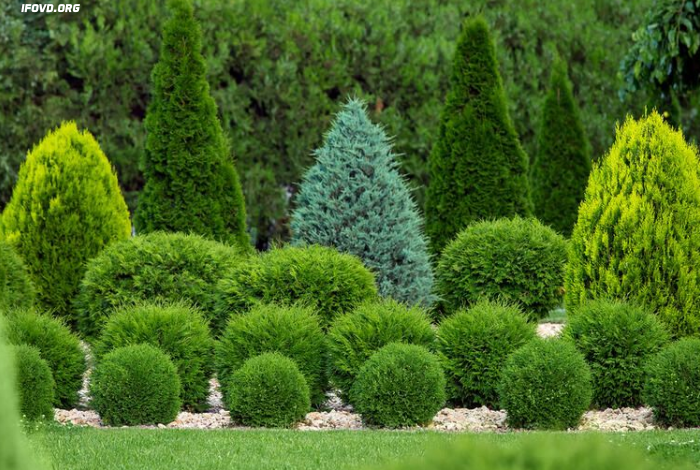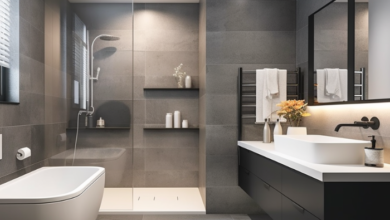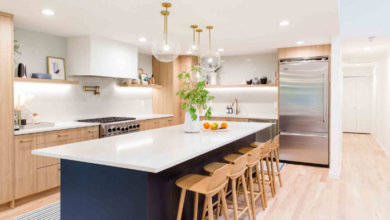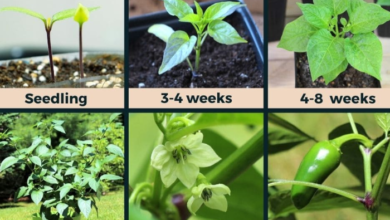Backyard Arborvitae Landscaping Ideas

When it comes to backyard landscaping, striking a balance between aesthetics, functionality, and privacy is key. One versatile and popular plant that can help achieve all these goals is the arborvitae. With its dense foliage, elegant structure, and various cultivars to choose from, the arborvitae has become a staple in many landscapes. In this article, we’ll explore a range of creative and practical ways to incorporate arborvitae into your backyard landscaping, enhancing both the visual appeal and the utility of your outdoor space.
Understanding Arborvitae
Before delving into landscaping ideas, it’s essential to understand the characteristics of arborvitae. Arborvitae, scientifically known as Thuja, is a genus of evergreen conifers belonging to the cypress family.
They are native to North America and Asia and are known for their tall, narrow growth habit and scale-like foliage. Arborvitae comes in various cultivars, offering choices in terms of height, color, and growth rate. Some popular cultivars include “Emerald Green,” “Green Giant,” “Techny,” and “Smaragd,” each with its unique attributes.
1. Privacy Screens
One of the primary reasons homeowners opt for arborvitae is their ability to create natural privacy screens. Tired of nosy neighbors or want to define your property’s boundaries? Planting a row of arborvitae strategically can provide an effective visual barrier.
The “Green Giant” cultivar, known for its rapid growth, is an excellent choice for this purpose. When properly spaced and pruned, arborvitae can form an attractive living fence that not only provides privacy but also enhances the aesthetics of your backyard.
2. Living Green Walls
If you’re working with limited space or want to add a touch of greenery to your patio or balcony, consider creating a living green wall using arborvitae. Vertical gardening is gaining popularity, and arborvitae’s compact growth habit lends itself well to this concept.
Install wall-mounted planters or build custom trellises to support the arborvitae’s growth upwards. This approach not only saves space but also adds a unique dimension to your outdoor area.
3. Accentuating Corners and Entryways
Arborvitae can serve as elegant focal points when strategically placed at the corners of your backyard or near entryways. Their symmetrical and columnar growth forms create a sense of balance and structure in the landscape. Flank your entrance with a pair of arborvitae plants to welcome guests and create a formal, inviting atmosphere.
4. Creating Outdoor Rooms
Backyards often serve as extensions of indoor living spaces, and arborvitae can play a crucial role in defining these outdoor rooms. By planting arborvitae in a semicircle or U-shape arrangement, you can create a cozy, secluded area within your backyard. This design not only adds an element of intimacy but also helps block out unwanted views and noise, making your outdoor retreat more serene.
5. Layered Landscaping
Achieve depth and visual interest in your backyard by incorporating arborvitae into layered landscaping. Combine different plants of varying heights and textures to create a multi-dimensional effect.
Place taller arborvitae cultivars at the back or center of planting beds, with lower-growing plants in front. This arrangement adds depth and dynamic movement to your landscape while also enhancing privacy and aesthetics.
6. Natural Backdrops for Flower Beds
Arborvitae’s rich green foliage can serve as a beautiful backdrop for colorful flower beds. Planting vibrant perennials and annuals in front of arborvitae cultivars creates a striking contrast that draws the eye.
Consider using a mix of flowers with varying heights and bloom times to ensure year-round visual interest. This combination not only softens the look of the arborvitae but also transforms your backyard into a floral paradise.
7. Tranquil Meditation Gardens
If you’re seeking a peaceful retreat in your backyard, consider designing a meditation garden centered around arborvitae. Create a circular or square arrangement of arborvitae plants, leaving an open space in the center.
Add a comfortable seating area, a water feature like a small fountain or pond, and calming stones or gravel pathways. The arborvitae’s evergreen foliage will contribute to the serene atmosphere of your meditation garden.
8. Espaliered Arborvitae
Espalier is a technique of training plants to grow flat against a surface, such as a trellis or a wall. While this method is often associated with fruit trees, it can also be applied to arborvitae. By espaliering arborvitae along a wall or fence, you can create an artistic and space-saving element in your backyard. This approach not only adds visual intrigue but also maximizes the use of limited space.
9. Container Planting
Arborvitae can thrive in containers, making them a versatile option for patios, decks, and balconies. Select smaller cultivars that are well-suited for container growth and plant them in decorative pots.
This allows you to move the plants around to change the layout or to protect them from extreme weather conditions. Container planting with arborvitae provides a convenient way to bring greenery to areas with limited planting space.
10. Seasonal Decorations
Don’t underestimate the versatility of arborvitae in seasonal decorations. During the holiday season, you can adorn your arborvitae plants with festive lights, ornaments, or garlands.
Their dense foliage provides a sturdy base for decorations, creating a warm and welcoming ambiance. Whether it’s a Halloween theme, Thanksgiving accents, or Christmas cheer, arborvitae can be a central element in your ever-changing outdoor decor.
Maintenance Tips
To ensure the success of your arborvitae landscaping endeavors, keep in mind a few maintenance tips:
- Pruning: Regular pruning helps maintain the desired shape, promotes healthy growth, and prevents overgrowth. Trim any dead or diseased branches to keep the plant looking its best.
- Watering: While established arborvitae plants are relatively drought-tolerant, they still require consistent watering, especially during their initial growth period. Provide adequate moisture, particularly during hot and dry spells.
- Mulching: Applying a layer of mulch around the base of your arborvitae helps retain moisture, regulate soil temperature, and prevent weed growth. Keep the mulch a few inches away from the trunk to avoid moisture-related issues.
- Protection from Winter Elements: In colder climates, protect your arborvitae from heavy snow accumulation by gently brushing off excess snow to prevent branches from breaking.
- Pest and Disease Management: Keep an eye out for common pests like aphids and spider mites, as well as diseases like cedar rust. Regular inspection and appropriate treatments will help keep your arborvitae healthy.
Final Thoughts
Arborvitae offers a myriad of landscaping possibilities for your backyard, ranging from creating privacy screens to enhancing the beauty of your outdoor space. Its versatility, combined with its lush green foliage, makes it a favorite choice among homeowners and landscape designers alike.
Whether you’re aiming for a tranquil retreat, an artistic focal point, or a practical privacy solution, arborvitae can help you achieve your landscaping goals while adding a touch of natural elegance to your backyard.



